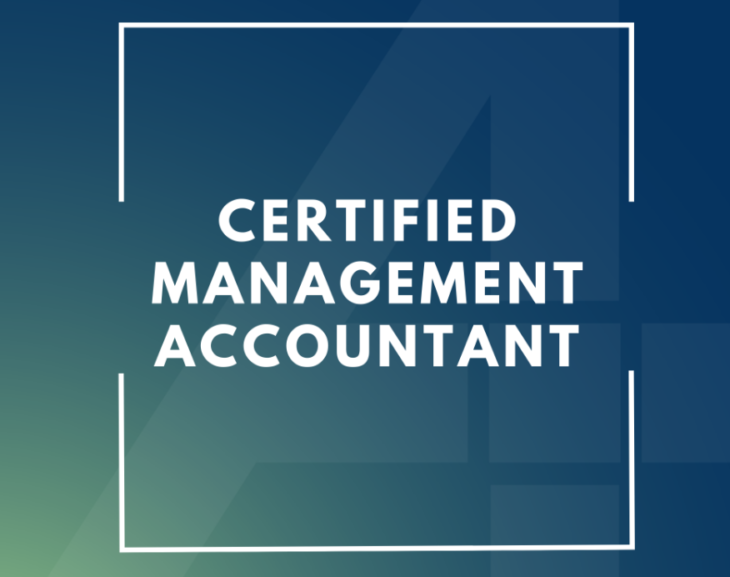
What Is A Certified Management Accountant? – 2024 Guide
When the topic of accounting comes up, most people automatically associate the industry with the work of Certified Public Accountants (CPAs). After all, almost everyone has some contact or general familiarity with what CPAs do, since everyone has to file a tax return. In reality, though, there are many subspecialties within accounting, and CPAs are just one type. Another key member of the profession is the Certified Management Accountant (CMA).
So, what exactly do CMAs do, and what makes them different from CPAs? While there is some overlap between the roles, as the names might suggest, CMAs play a more important role in businesses’ internal operations than their publicly-oriented counterparts. As key players in both publicly- and privately-controlled businesses and government bodies, CMAs perform a variety of financial and data management tasks with wide-reaching implications for operational success.
The Job Description

The best way to understand what CMAs do is to look at their job descriptions. What do businesses expect when hiring a CMA?
CMAs, who may also be referred to as cost accountants, industrial accountants, or corporate accountants, among other titles, are distinguished from CPAs in several ways. The most important of which being that they prepare financial data for internal use, rather than for use in public filings, like taxes. This involves a lot more than just keeping up with budgets and payroll, though. Rather, the types of internal financial data CMAs work with is more likely to be used to help companies and organizations manage their investments, develop long-term financial forecasts, and mitigate potential financial risks. To do so, they typically work alongside business owners or high-level managers, or even the board of directors.
In addition to managing and evaluating financial data, CMAs are often responsible for overseeing lower-level accountants within an organization. These are the individuals who do the basic budgeting and tax preparation, which CMAs then use to perform their analyses. However, depending on the size of the company, some CMAs do all of these tasks themselves. They may even hold dual certifications as CMAs and CPAs.
As indicated by their various titles, CMAs work in a wide range of industries. These include finance, transportation and construction, healthcare, insurance and real estate, and even mining. Some CMAs are also independently employed and oversee financial management for a variety of smaller businesses, rather than working internally for a single corporation or government entity.
The Licensing Process

While CMAs may also hold licensing as CPAs, these are two separate licensing processes and each is quite challenging. To become a CMA, you have to pass a two-part exam, which encompasses a total of 12 different professional competencies. These include financial planning and analytics basics, such as budgeting, cost management, and internal controls, as well as a section on strategic financial management, covering topics like corporate finance, risk management, and professional ethics.
Like many other licensing exams for finance-related careers, the CMA exam is notoriously difficult. Luckily, there are review programs like the Wiley CMA Exam Review system that can help those hoping to break into the industry navigate the test content. By using tools like predictive scoring and adaptive review that focuses on building up weak areas, test takers can crack the code.
Another important element in certifying as a CMA is a fieldwork. While CPAs are largely only required to complete appropriate college coursework to sit for the exam, you’ll need at least two years of relevant career experience, such as working as an accounting clerk or budget analyst, in order to qualify to take the CMA exam.
Management Accounting Up Close

CMAs clearly bring an advanced understanding of business finance to their role, but what types of decision-making activities does their work support in the name of risk management or financial forecasting? To most people, these are nebulous terms, but for CMAs, they’re responsibilities with very real consequences, and the specifics vary widely based on the industry.
Consider a CMA working for a manufacturer, as an example. One issue CMAs in this sector frequently encounter is known as a make-or-buy decision, and the premise is precisely what it sounds like. In these situations, CMAs must evaluate issues like cost and production availability to determine whether it makes more financial sense for a manufacturer to produce something it needs internally, or if they should purchase it from an outside supplier. And while this might be a relatively simple decision for a small company with limited production capacity, when dealing with multinational corporations that are manufacturing thousands or millions of units of an item, issues like cost and timing are dramatically multiplied.
When CMAs analyze an issue – whether that’s a make-or-buy decision or another major business matter – they don’t just help the organization choose a path. They also predict what will happen next based on that decision, calculating how profitable a new product will be and how long it will take to turn a profit, for example. And, when a decision fails to achieve its predicted outcome, CMAs are asked to determine why that happened.
Perhaps one of the highest stakes decisions that CMAs help businesses to make is whether to acquire another company or invest in new construction or equipment, and these decisions are all wrapped up in future projections. How do CMAs figure out what lies ahead? Though obviously no one can see the future, CMAs use various data sources, including big picture market trends, existing growth projections, and competitor data, and they use all of this information to calculate the most likely outcomes of different decisions. What’s more, they do all of this with issues like risk management and their responsibilities to investors in mind. Forecasting potential outcomes is complicated, but it’s this ability to apply financial and other business data to nuanced scenarios that sets CMAs apart from CPAs and other financial professionals.
A Growing Industry

All accounting and auditing jobs have been on a steady growth path in recent years, and projections continue to look good for CMAs. For those interested in this career path, though, it’s important to remember it won’t be an easy one. Still, for analytic thinkers drawn to high stakes, varied work, being a CMA could be the ideal career track.